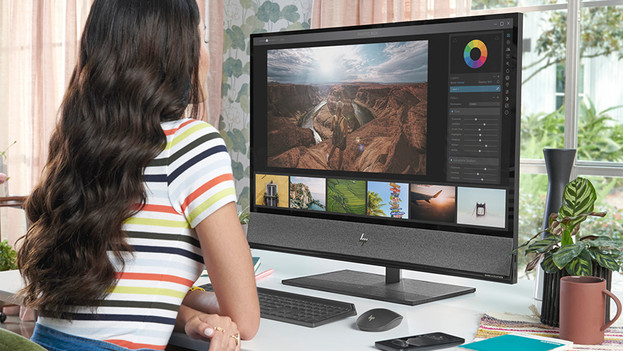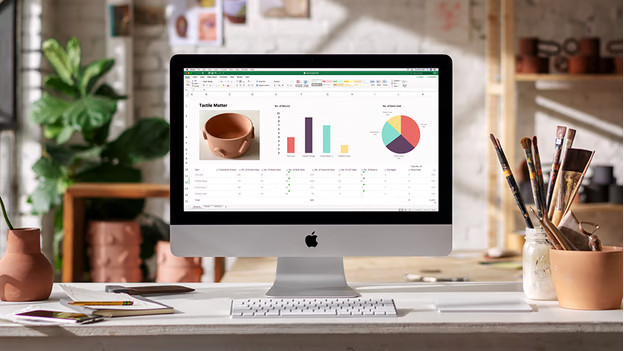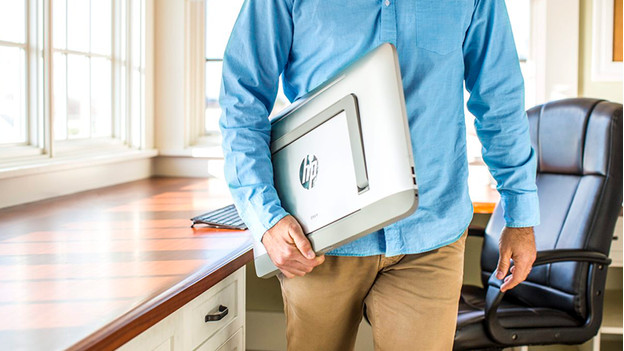
The advantages and disadvantages of an all-in-one PC
Choose an all-in-one PC

An all-in-one is a computer and a screen in one. In order to find out if this type of desktop suits you, it's a good idea to ask yourself the following questions:
- Do you want a tidy desk?
- Is it important that you can set it up easily and get started quickly?
- Is upgrading hardware important or not?
- Should broken parts be easily to replace?
In short
| Pros | Cons |
|---|---|
| All parts are in tune | Upgrading is more difficult |
| It looks stylish and organized | Did something break? You have to replace everything |
| You need less space |
All parts are in tune

Like the name suggests, an all-in-one is a combination of a desktop and a monitor, often featuring a webcam and speakers. Because all those parts form one whole, they're in tune. This also makes the setup a lot easier than when you choose a PC with a separate monitor. After all, you don't have to connect a monitor to a computer case, for example.
It looks stylish and organized

An all-in-one has a sleek design, especially compared to the often bulkier and more boring computer cases. If you're looking for a computer to place in a central spot in your living room, an all-in-one PC is an interesting option thanks to its good looks. On top of that, you need fewer cables to connect an all-in-one PC. Usually, 1 or 2 cables are enough. Especially if you work with a wireless mouse and keyboard.
You need less space

Because you don't have to find a spot for a separate computer case, the all-in-one PC takes up a lot less space. That's useful if you want to place your computer in a spot with little space or if your desk isn't very big. You can also often find all-in-one PCs on kitchen tables. There is usually enough space there.
Upgrading is more difficult

If you notice that you need a little more RAM or storage space a year after purchase, a 'normal' desktop is usually very easy to upgrade. Most computer cases even have empty slots with space for an extra hard drive or SSD. But it's a lot more difficult to upgrade an all-in-one. Parts are often soldered in place or there's no room for extra RAM or extra storage.
Did something break? Replace everything

If a part of an all-in-one PC breaks, chances are that you can't replace the individual part. Especially if the screen of the all-in-one breaks. You'll have to replace everything. With a combination of a separate PC and a monitor, replacing an individual component is clearly a lot easier. If your monitor breaks, you don't have to buy a new desktop as well.


